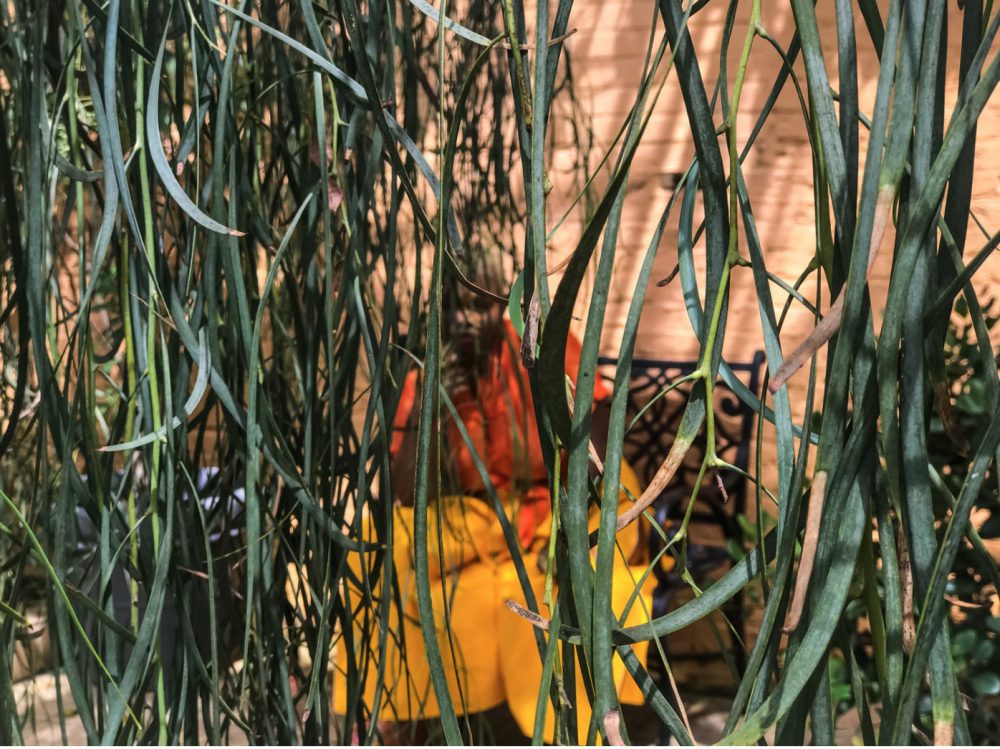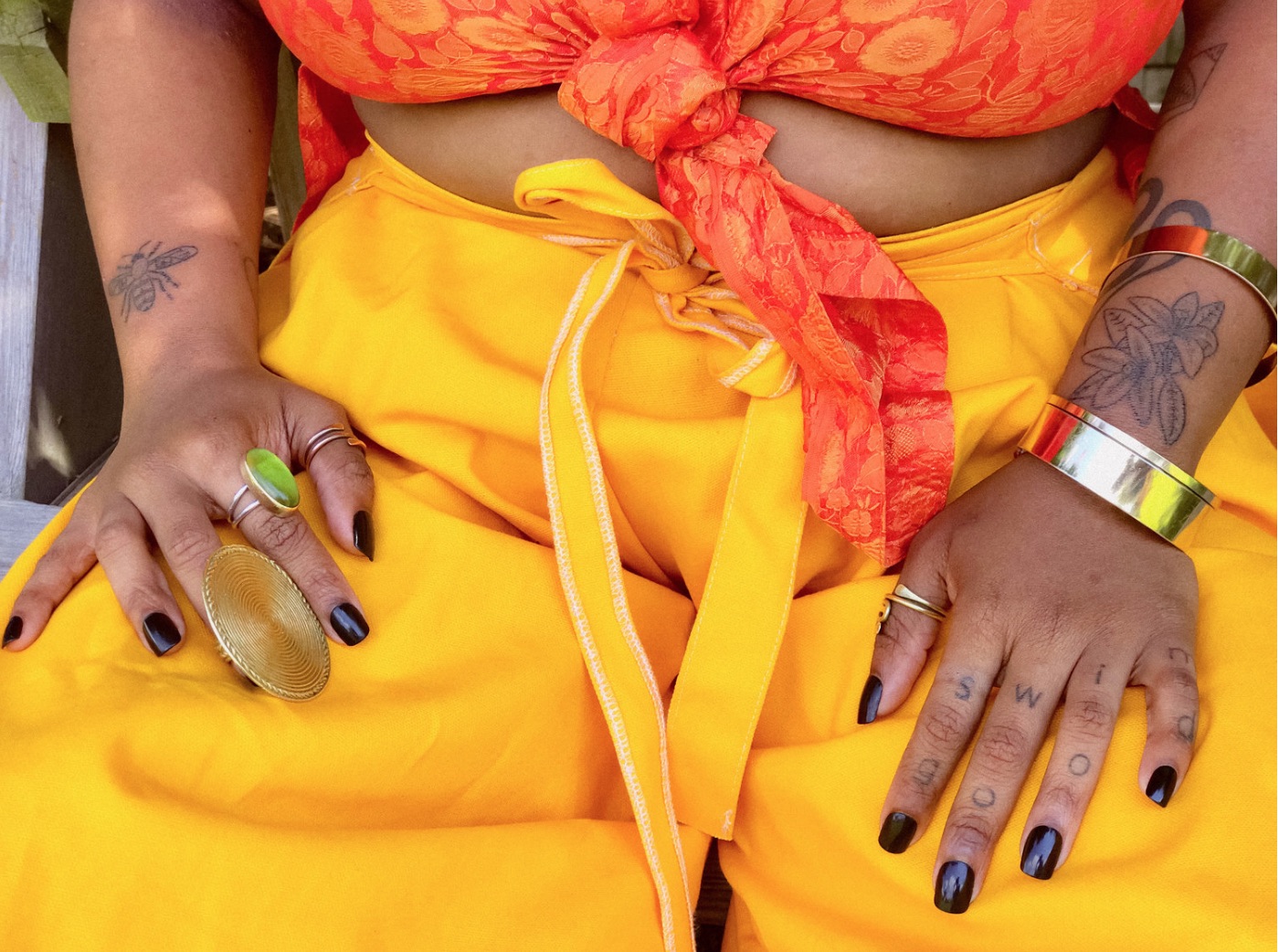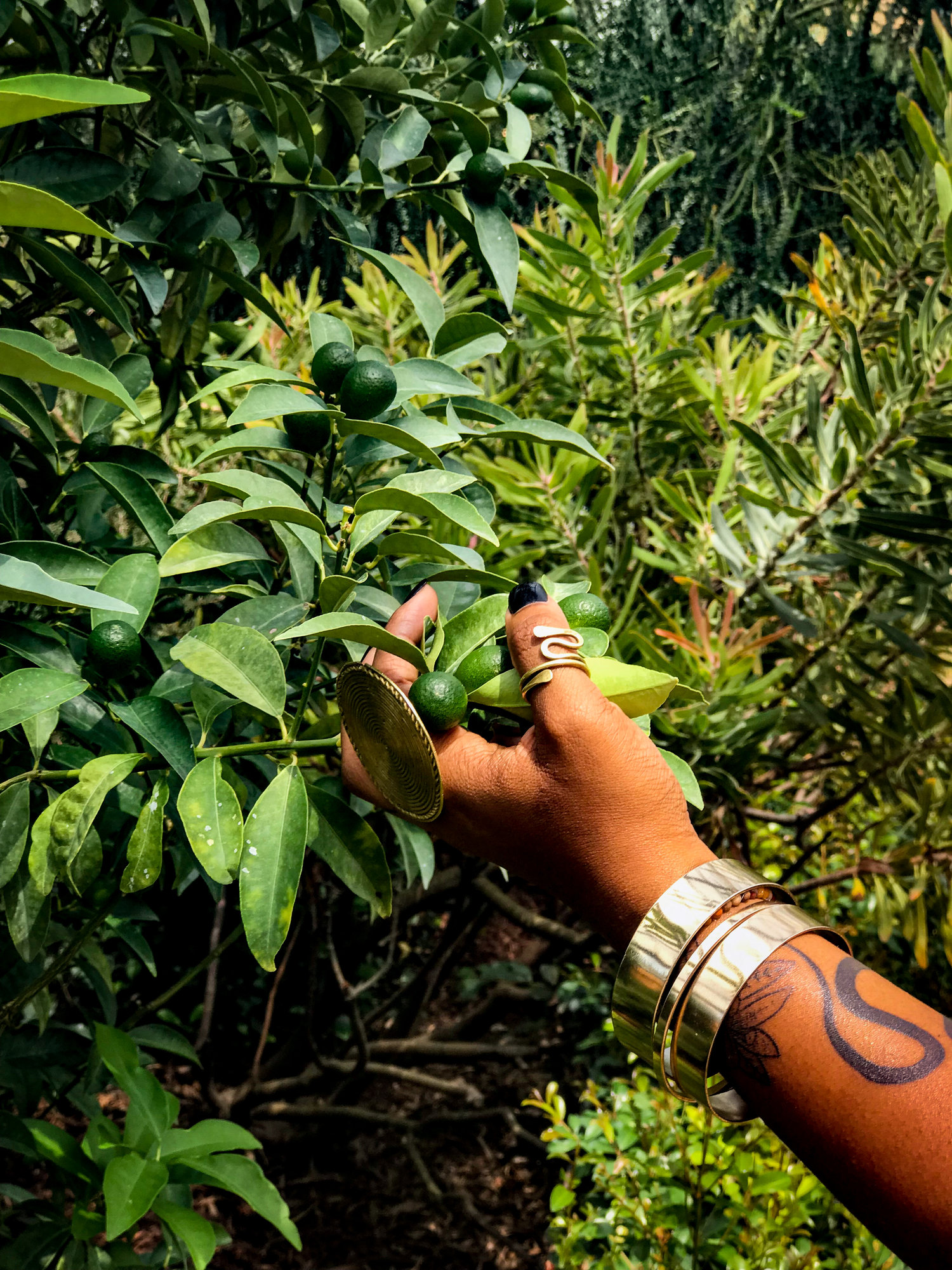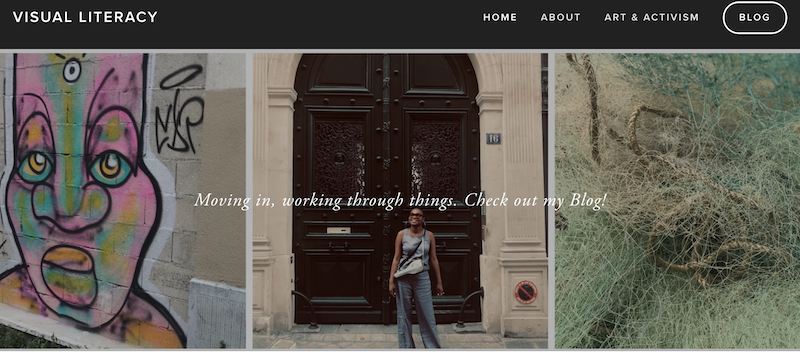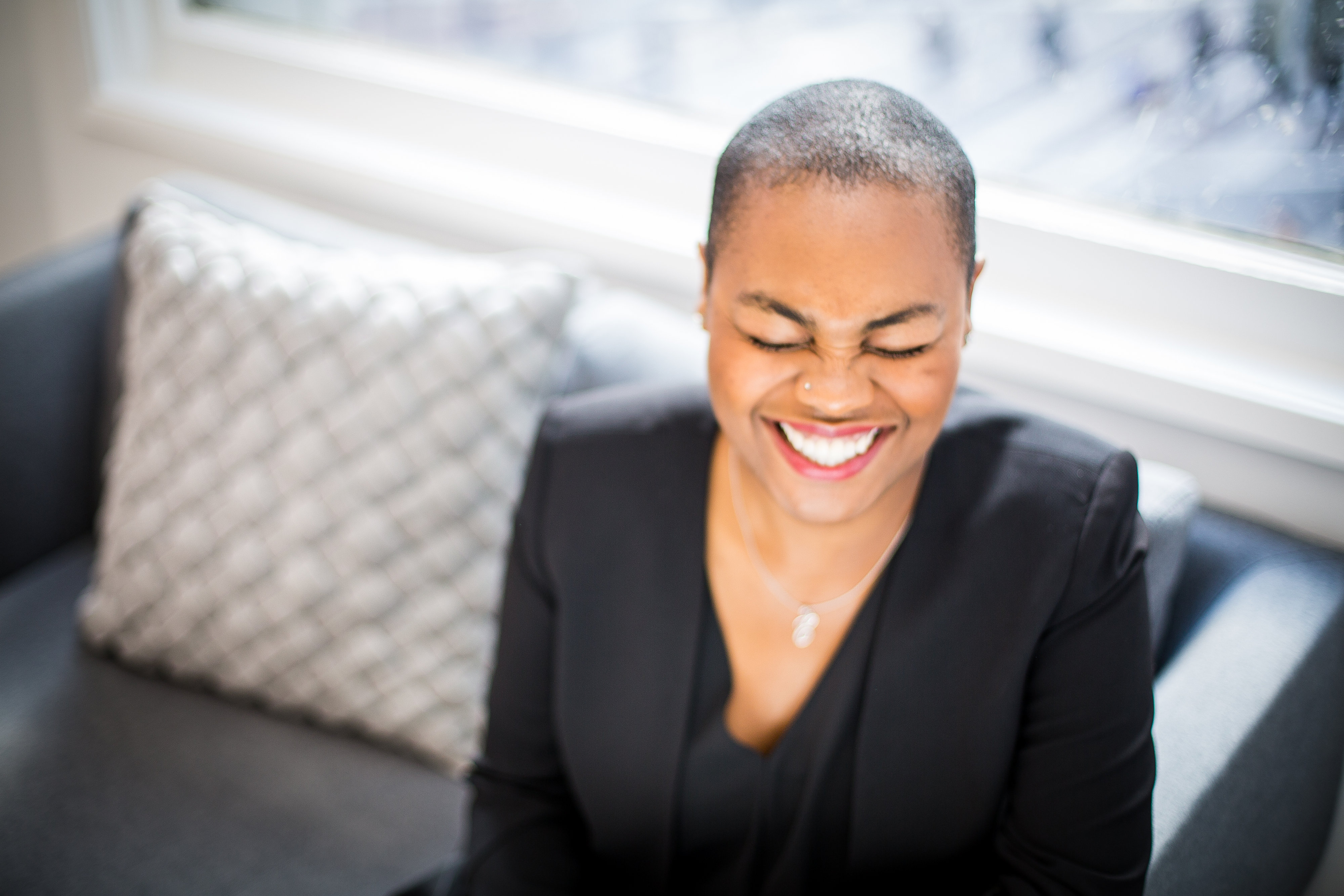‘How Are We Showing Up in the World?’ | Oakland, California
EAS correspondent Uji Venkat in conversation with American emerging artist, Jasmine Brown.
Jasmine and I discussed her journey as an emerging artist and the development of creative, socially cognizant work. In the past Jasmine found herself frustrated by employment opportunities that did not place her in proximity to her dreams. Her new mantra is, “How am I showing up in the world?” Instead of trying to fit into prescribed roles she currently strives to carve out space for creativity in her work, drawing inspiration from poets like Nayyirah Waheed, and activist organizations such as Essie Justice Group and the BlackFemaleProject.
Jasmine Brown
Artist: @visual_lit
Title: Ascension
Medium: Photography
Model: Jenné Afiya @left_thigh
Quote: “You can have powers all day, many of us have powers, most of us have a power whether that is the gift of being able to be clairvoyant, hearing spirits, most people do, they ignore that or they use them to manipulate people that’s just big facts.
Use your power wisely. “- Jenné Afiya
Description: check out @visual_lit ‘s blog for the full story and if you aren’t already following please follow @sugarwater_gallery
-----------------------------------------------------------------------------------------------------
Uji: Tell me a little bit about your background. Where did you grow up and go to school?
Jasmine: I am from Oakland, California. As far as my background, I was raised by my mother who, at the time, “forcibly” made me listen and watch things pertaining to black cultural iconography. Anything she felt I needed to know. I recall being very agitated by her insistence when I was younger. I would always ask why these things were important. I did not realize until I got to college how much my upbringing shaped how I saw and navigated the world. I really did not grasp how much these cultural lessons from my mother would come to influence my decision to pursue a degree in African American studies with an emphasis in Film and Television from UCLA.
To backtrack, I was in undergraduate school, planning to graduate. I’m not sure when I decided to pursue a degree in sociology and pre-law. I think it was in my aunt's kitchen when I told my cousin I wanted to pursue art, as it was my favorite subject in high school. I remember him saying that art would not make any money and that I should pursue law. Mind you, I only saw this person once a year. I’m not sure why I took his word for it. I think I was embarrassed by his comments. I think it shamed me a bit socially. So there I was in the counselor's office pursuing what would “make money”. I believe it was my 19th birthday. I was not feeling the coursework, and I could barely get into the required classes. I really enjoyed the African American studies and film classes. Tears just started flowing in that office, that day. The counselor asked, “If you could do anything and you didn't have to worry about anyone else's opinion, what would you do?" I said, “I'm going to go into film. I'm going to go into television. And I'm going to be an African Studies major…” Film spoke to me in ways that allowed me to transcend whatever I was going through and wherever I was in life. Suspension of disbelief allows one to insert themselves into the narrative and live vicariously through the characters. Film helped me to compose my dreams and aspirations.
Jasmine Brown
Artist: @visual_lit
Title: Mystical
Medium: Photography
Model: Jenné Afiya
Date: 2018
Description: This is the first part of a series of conversations with women of color and their transformational
healing practices. The series located within @visual_lit ‘s blog space.
-----------------------------------------------------------------------------------------------------
Uji: What experiences made you realize that you wanted to be an artist?
Jasmine: I’ve had many realizations along the way. I realized I wanted to be an artist in film class. Our instructor provided examples for our final projects. One of the shorts followed a Black woman in a blond Nicki Minaj-esque wig culminating at Applebee's. Everything has its place, but I began to question 'How are we showing up in the world?' For my own project, I searched for footage of people who fought for our right to representation in the world during the Civil Rights Movement. That was the only place I knew to start. I asked 'What would they say if they could see us now? Would they put up the same fight? What is the continuation of that legacy?' At the time, it was the early 2010s. I titled the piece Hindsight is 2012. I really could not listen to rap music for a while. I could not tolerate our representation in the media. There was an awareness I could not ignore after my studies. So the piece Hindsight is 2012 mixes images from the Civil Rights era with more derogatory images. Comparing and contrasting the eras with music from the Pointer Sisters and the Black Panther Party for Self Defense. Representations of a golden era I grew up hearing a lot about and aspiring to return to in many ways at the time.
Uji: When did being a woman become a crucial part of the identity you express in your work?
Jasmine: I distanced myself a lot from being a woman, which is a really crucial part of my identity. I felt it made me more vulnerable and weak. I am currently nestled somewhere between the distance and the getting to know. In much of my current work, I fellowship with women who are also coming to know just how much womanhood is crucial to who we are, through activism and storytelling, which is activism in my communities.
I grew up with a lot of toxic masculinity from both men and women, and there was also the issue of my father’s absence growing up. I felt like I disassociated with my body. I could walk into situations and be totally absent within my form. There was clearly a part of myself I cut off in order to exist and function in the world. In my family, community, at work, on the creative path, all of these things became disjunctive by default. At work, I felt my body and labor were not valued. I was good enough in conventional workplaces to do all the tasked assigned but not good enough to be more creative at work. To do the things I wanted to do, were outliers to my job description but integral to my interest in working for the organization(s). I think many come to understand that their gender and/or race is an inhibitor in an ill-suited workplace. My work with the BlackFemaleProject, that aims to positively impact the wellness and professional experience of Black women and prepares younger women for the realities of the workplace, affirms so much of what I’ve stated.
If I can cite a moment for when I came to understand how crucial womanhood was to my identity: it was at my first Essie Justice Group[1] retreat. On my bed there was a message from the founder Gina Clayton-Johnson under a Nayyirah Waheed quote. I took a long breath and replied ‘I have been waiting my whole life for this.’ I broke down crying. I had never felt safe in my own form. My truest form, my light, has always been stamped out trying to fit into certain spaces. I am much more committed to just allowing myself to be me.
Jasmine Brown
Artist: @visual_lit
Untitled
Medium: Photography
Model: Jenné Afiya @left_thigh
Quote: “I became more comfortable with my magic. More comfortable with receiving signs and
messages from spirit, not viewing it as scary, viewing it as an essential part of life. “ -Afiya
-----------------------------------------------------------------------------------------------------
Uji: What does safe mean to you?
Jasmine: Safe means being allowed to show up, fully present, not on the defensive. Who would you be without your guard up, not at war? Growing up in Oakland, I felt my life never presented an opportunity to walk up and down the street smiling, wearing what I wanted to wear, being my truest self. Truly. Real or imagined. Being allowed to love the things you love. The ability to be creative. That is safety.
I work now to create safe spaces for myself. Someone told me, you are your greatest resource. Self-reliance within the community is where it’s at. Spaces, where you benefit and are encouraged to grow, are beautiful. My work with Essie Justice Group was a big part of my ability to create a safe space.
Uji: In what direction would you like to expand your work?
I am leaning towards photography and returning to film editing. I will continue to write. I have an Idea Wall at home. I learned how to make an Idea Wall at the Brioxy Executive Leadership Bootcamp in Baltimore. The idea wall contains six tenets I orient my life around. These things keep me on track and feeling like there's some rhyme to my reason. The six tenets are women, writing, visual art, the earth, travel, and healing. As long as what I do ticks off or connects to these boxes, I will continue expanding in ways I feel good about. I know that in the next six months I will travel to a few countries. Spaces that I am interested in living long-term, not just to see. Now is the time for me to explore. I also would like to continue the series on my blog around the women in my network and their healing practices.
Uji: Do you have any advice for young artists at Emergent Art Space?
The first thing that comes to mind is: do your thing. Even if someone else is doing the same thing, still do it your way. There’s a Black woman entrepreneur on Instagram called @supacent and she talks a lot about this. Your tweak and your voices are unique. I just want people to raise their voices, to be present for who they are called to be. If ninety-nine people do the same thing and you want to add to the conversation, be that hundredth person.
Nobody can contribute for you, like you.
Speak to everything you feel compelled to speak about. Put your two cents in; add your life’s work to the world. In Black/African culture there is a request for “permission to speak.” Give yourself permission. Tell your story. I am a Black woman and I am going to tell my story.
Jasmine Brown
Artist: @visual_lit
Title: Untitled
Medium: Photography
Model: Jenné Afiya @left_thigh
Description: This is the first part of a series of conversations with women of color and their
transformational healing practices. The series located within @visual_lit ‘s blog space.
-----------------------------------------------------------------------------------------------------
THE PATH FORWARD
As an artist integrating visual imagery and writing, Jasmine created a blog space. Blogging is an enriching, multidisciplinary and expansive practice. It has given her a platform to explore, reflect and share her vision, thinking, experiences and stories. She has also used this as an opportunity to conduct interviews with other artists of color about self-care and healing.
To hear more from Jasmine, check out her Visual Literacy blog.
[1] Essie Justice Group is a nonprofit organization of women with incarcerated loved ones taking on the rampant injustices created by mass incarceration. Their award-winning Healing to Advocacy Model brings women together to heal, build collective power, and drive social change.
-----------------------------------------------------------------------------------------------------
Jasmine Brown is a writer, editor, and activist from Oakland, California. As a creative much of her work centers around social advocacy
for the overall wellbeing of people of color. She is a logistics and programming guru who loves lending her organizing capacity to heart-centered work. She is a graduate of the University of California Los Angeles, where she received a degree in African American Studies
with an emphasis in Film and Television. She has worked with and continues to work with a number of non-profits in and beyond the
Bay Area as a consultant. Including the BlackFemaleProject, Essie Justice Group, the Museum of the African Diaspora, Out of the Box Projects, GirlFly, and CatchLight. The tenants that govern where she goes next are: writing, the earth, travel, women, healing,
and visual art. She records her journey on her website: www.visualliteracy.me.
--------------------------------------------------------------------------------------------------

